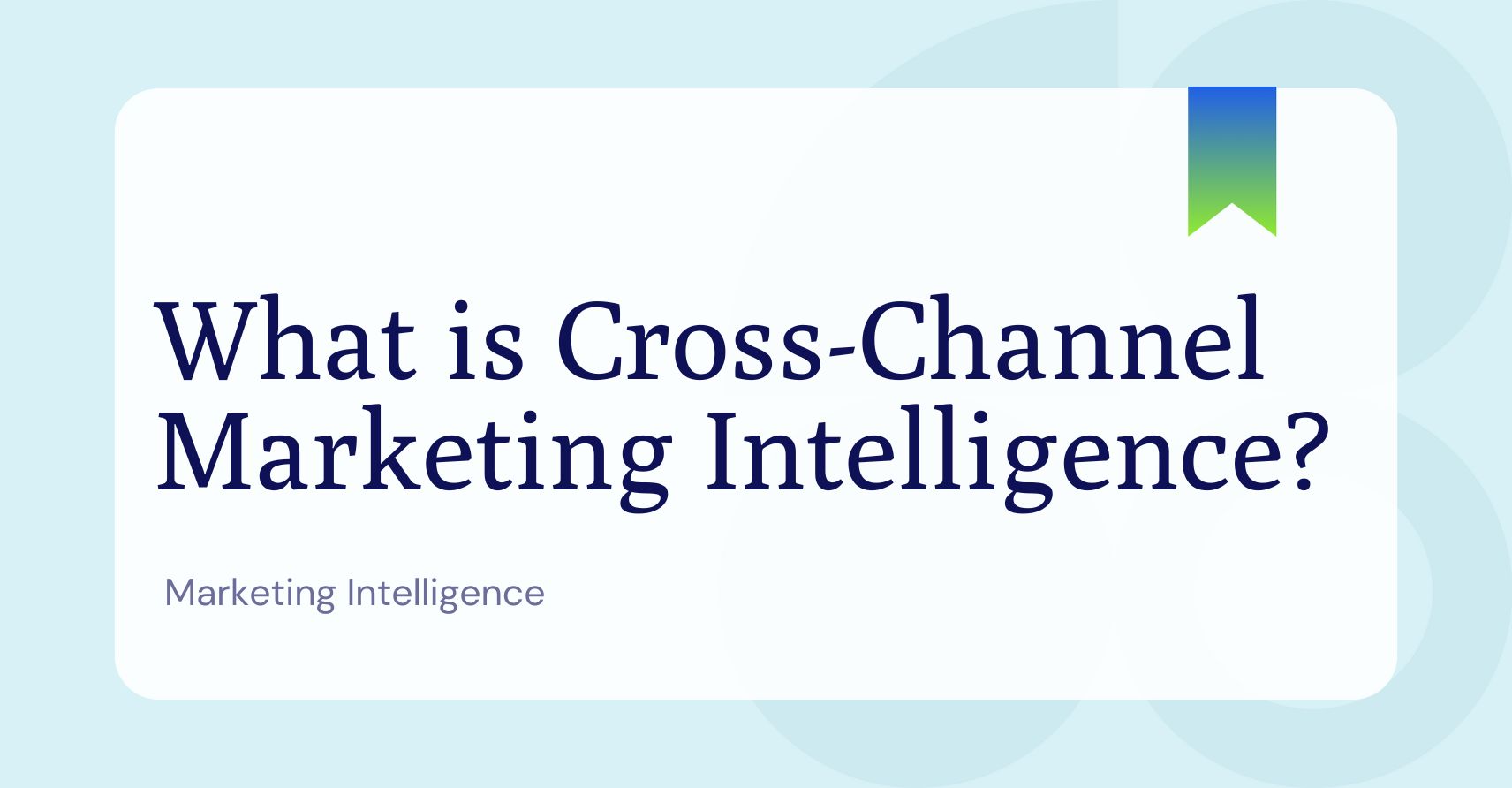Cross-channel marketing intelligence is the process of gathering, and analyzing results data from multiple marketing channels to understand how they work together. Instead of evaluating each channel in a vacuum, it helps you get a holistic view of the customer journey, identifying patterns, overlaps, and opportunities to get better results.
In a B2B context, you would need to connect - LinkedIn Ads, organic social media impressions and engagement, email marketing results, webinars registrations, paid search results, and even offline events into a single view. By doing this, you can see which touchpoints are influencing decisions, which channels are underperforming, and how to allocate future budget more effectively.
For example:
A marketing manager at a SaaS company notices that leads coming from LinkedIn Ads don't immediately convert. However, when the data is connected across channels, it becomes clear that these same leads often engage with a webinar and later respond to a follow-up email. Without cross-channel marketing intelligence, the value of those LinkedIn campaigns might be underestimated.
Why is cross-channel marketing intelligence critical?
Modern B2B buyers take complex, non-linear paths. They move between multiple touchpoints-online and offline-before making a decision. If you're only tracking single-channel performance, you risk:
-
Misjudging ROI A channel might look ineffective on its own, but in reality, it plays a crucial role earlier in the funnel.
-
Wasting budget : You could keep investing in channels that don't influence conversions, while underfunding ones that drive high-value leads.
-
Missing optimization opportunities : Without the whole picture, you can't fine-tune campaigns for maximum impact.
Cross-channel marketing intelligence addresses these issues
-
Connect disparate data sources into one dashboard.
-
Measure both direct and indirect contributions to conversions.
-
Highlight the connection between channels, how they amplify or weaken each other.
-
Give marketing teams the evidence they need to make budget decisions confidently.
How does cross-channel marketing intelligence work?
Here are the steps you need to take:
1. Aggregate your data
The first step is pulling data from all relevant channels, social platforms, ad networks, email tools, web analytics, CRM systems, and event platforms. The goal is to collect performance metrics in one central location.
- Data integration
Once collected, the data needs to be mapped to connect touchpoints across channels. This might involve matching leads by email address, tracking UTM parameters, or syncing CRM records.
- Attribution modelling
Attribution models assign value to different touchpoints in a buyer's journey. Instead of giving 100% credit to the final click, you can use models like multi-touch attribution to see how each channel contributes.
- Analysis and insight generation
With connected data, you can look for trends, such as which channel combinations produce the highest quality leads, or which touchpoints tend to appear early vs. late in the funnel.
- Optimization
The final step is taking action based on the insights. This could mean reallocating ad spend, adjusting messaging, or refining your audience targeting.
Examples of cross-channel marketing intelligence in action
- Event promotion across platforms
A B2B software company promotes its annual conference using LinkedIn Ads, organic Twitter posts, and a nurture email sequence. Analysis shows that while most registrations come directly from email clicks, LinkedIn Ads are responsible for 60% of the awareness that gets people to open those emails.
- Paid search boosts organic performance
A manufacturing solutions provider runs Google Ads campaigns for targeted keywords. Over time, they see an increase in branded organic searches,indicating that paid ads are driving more people to search for the company name directly.
- Webinar engagement patterns
A cybersecurity firm hosts webinars promoted on multiple channels. They discover that webinar sign-ups from LinkedIn Ads are more likely to convert into demo requests, while sign-ups from Twitter tend to stay in the awareness stage longer.
Common mistakes to avoid
-
Treating channels as separate campaigns : It's tempting to measure each in isolation, but that's how value gets lost.
-
Over-relying on last-click attribution : This can undervalue early touchpoints that influence the final decision.
-
Failing to unify tracking parameters : Without consistent UTM tags or lead identifiers, it's hard to connect touchpoints accurately.
-
Ignoring offline data : Events, phone calls, or partner referrals can play a big role in multi-channel journeys.
How cross-channel marketing intelligence relates to LinkedIn
LinkedIn plays a unique role in B2B cross-channel strategies because it's a trusted environment for professionals making high-value decisions.
With cross-channel marketing intelligence, you can:
-
Track how LinkedIn campaigns influence later conversions in other channels.
-
Identify LinkedIn as a strong first-touch channel, even if conversions happen elsewhere.
-
Optimize audience targeting on LinkedIn based on multi-channel engagement patterns.
-
Understand how LinkedIn organic posts contribute to paid campaign success.
Example:
A marketing team promoting a whitepaper uses LinkedIn Ads as the primary driver for downloads. Later, they see that people who downloaded the whitepaper via LinkedIn are twice as likely to respond to a direct sales outreach compared to leads from other sources.
Benefits for marketing and social media managers
For marketing managers:
-
Better ROI measurement across the full funnel.
-
Data-driven budget allocation.
-
Evidence to support strategy recommendations to leadership.
For social media managers:
-
Understanding how social content impacts other channels.
-
Proof of social's role beyond vanity metrics like likes and shares.
-
Smarter audience segmentation and campaign timing.
Getting started with cross-channel marketing intelligence
-
Audit your current channels : List all platforms taht are in use and identify where the data is and how to access it.
-
Define your KPIs : Focus on metrics across the funnel (e.g., pipeline influence, customer acquisition cost).
-
Set up consistent tracking : Standardize UTMs, IDs for the Leads, and campaign naming conventions.
-
Choose an integration-friendly analytics tool : Look for platforms that connect with your CRM, ad accounts, and social media tools.
Test and refine : Start small, analyze early, and scale once you see actionable patterns.
